E-Commerce Marketing: A Simplified Guide for 2025
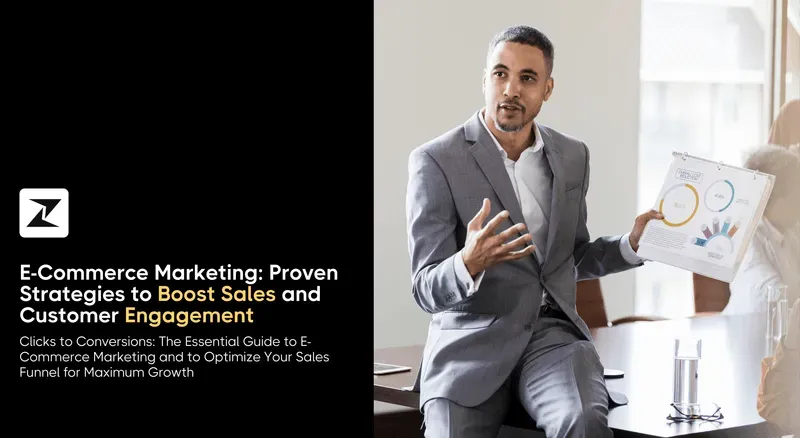
When the internet was first introduced to the public, there weren’t many people who understood how it worked or how big it would be in the future. With countless sites popping up every day, it has become a network of billions of pages being served and accessed by millions of people around the world.
As the search volumes increased and people started to use the internet for daily tasks, businesses also saw this as an opportunity to make their offerings available digitally. This led to the e-commerce industry and the brands we know and use today.
However, giving your customers the ability to purchase your products online sounded amazing in the beginning, nowadays, it has become a common occurrence that most users won’t think twice about. This means making your business digital is no longer enough.
You have to find a way to stand out from the crowd and make your USP known to your target audience. How can you achieve that? E-commerce marketing is a way for you to bring potential customers to your platform, nurture them to transform them into paying customers, and build strong relationships for continuous business success.
With a well-planned e-commerce marketing roadmap along with the right e-commerce marketing tools, you can effectively correctly convey your brand’s proposition, market your offerings, and compel prospects to make a purchasing decision.
Having said that, let’s see what e-commerce marketing is all about, the components it involves, and the steps to craft a personalized marketing strategy for your e-commerce brand. Let’s jump into it!
What is e-commerce marketing?
To explain it simply, e-commerce marketing involves promoting your online store by leveraging various methods to drive your bottom line. It includes a combination of free and paid marketing efforts to put your brand in front of your target audience.
Having a solid marketing plan is crucial for boosting the overall success of your online business. Businesses understand this fact and that is why the global spending on marketing and ads has gone over $1.65 trillion dollars.
On top of that, a large portion of e-commerce marketing goes to paid advertisements with a total of $3.5 billion on ads. Also, you can take advantage of organic channels like SEO and social media sites to let you establish your brand presence across multiple avenues.
Are there different kinds of e-commerce marketing?
As I have said before, e-commerce marketing comprises numerous sources, such as search, social media, and marketing (across traditional and modern channels). That’s why, here are some of the different components of e-commerce marketing strategy to grab attention towards your store:
Search Engine Optimization(SEO)
You might think that SEO is not that important for an e-commerce website, but a large number of users, around 87%, look for their product on a search engine first before checking out an e-commerce site. So, unless you have implemented robust customer retention strategies, organic search is where you will get most of your leads from.
Not just that. By making your product pages more search engine-friendly, you can increase the likelihood of them appearing in the top position, thereby resulting in more traffic that can lead to sales down the line.
To optimize your SEO for e-commerce, you can:
- Make sure your product pages include primary targeted keywords in all the meta locations, like page URL, title, meta description, heading, image alt-texts, and product description.
- Ensure your pages are optimized for mobile devices including layouts, loading speed, and UX.
- On top of product pages, you can create a blog page to upload meaningful content regarding your industry or topics that can help your audience make informed decisions.
Correctly optimizing webpages with the latest SEO practices can help you drive traffic to your platform and boost the chances of converting visitors into customers. Consider incorporating generative engine optimization to prepare your content to ensure your brand remains relevant as search behavior continues to evolve.
Social media marketing
Social media has become an unavoidable part of our lives with billions of people around the world actively using it daily. As a business, you can no longer ignore the vastness of social media. Moreover, 43% of customers go through social media to search for products they need.
Social media sites let you promote your online business by leveraging their users, giving you a ready-made customer base to showcase your products and services. Plus, each social media platform has different kinds of audiences that prefer different types of content.
For instance, Instagram is a more visually-driven platform where the focus is more on eye-catching images or small videos (Reels). It is mostly used by a younger audience or millennials.
X (formerly Twitter), in contrast, supports both text and visuals for advertisements. It has an older user base compared to Instagram and can be a great channel for you if you are looking to target a more mature audience.
Pay-per-click advertising (PPC)
Advertisements are a big part of e-commerce marketing. When placed correctly on the relevant platforms, they allow you to divert highly-qualified leads to your site which can result in higher conversion rates.
Ads are of multiple types and one of them is PPC. As implied by the name, if you are running PPC ads, you will be charged for each time they are clicked by a visitor. They are primarily used to help you attract new users to your e-commerce store or you can personalize them to get more sales.
The cost of running a PPC campaign varies based on the channel and the keywords you are targeting. For example, running a PPC ad initiative on search engines like Google may differ in price compared to placing Click-to-WhatsApp ads on Instagram or Facebook.
You have to identify the channel primarily used by your target audience to browse for products before you can run PPC campaigns. If your audience is active on organic channels like websites or search engines, you can leverage Google Ads to increase your brand awareness.
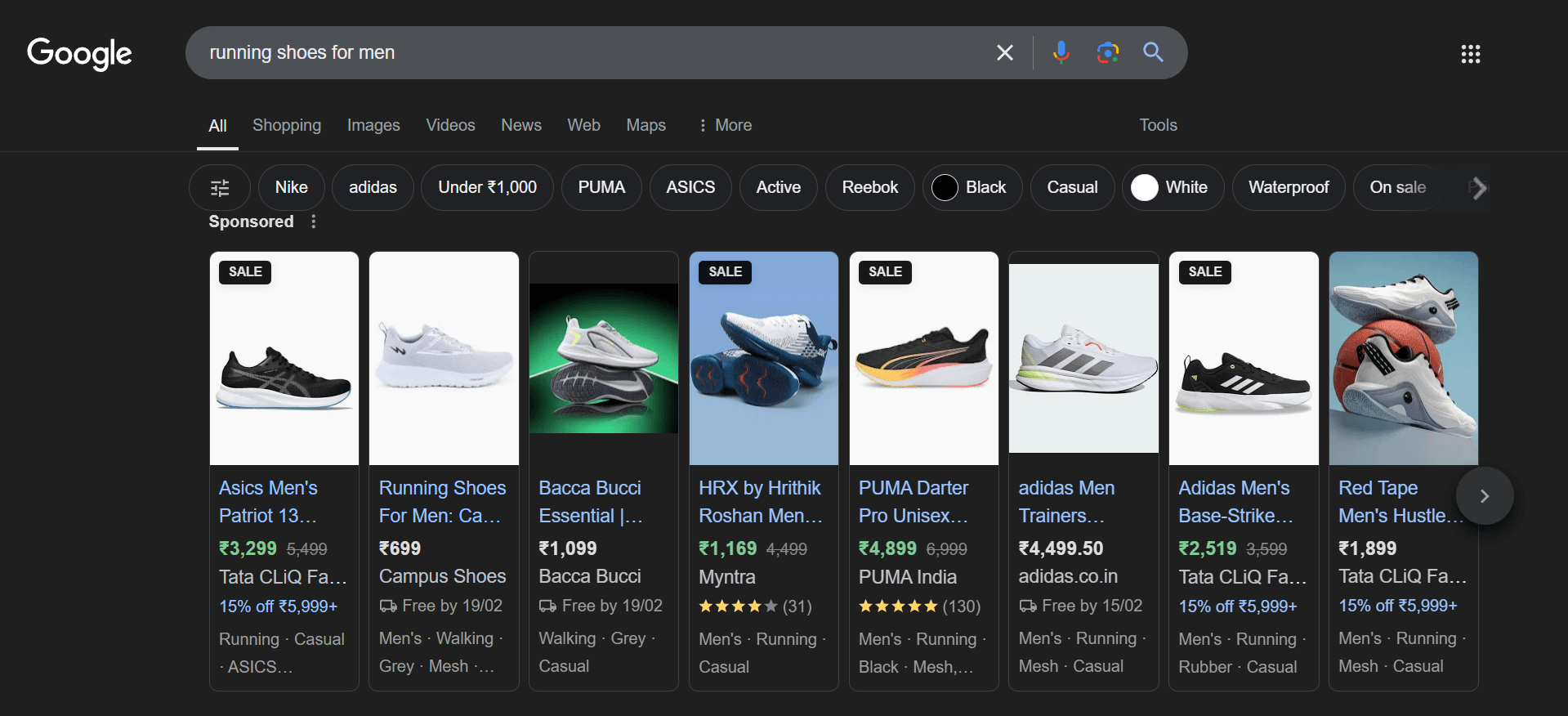
On the other hand, if they are present on social media sites, you have to place your ads on those platforms to let them know about your business. You can also go a step further by combining both these sources for a healthy balance.
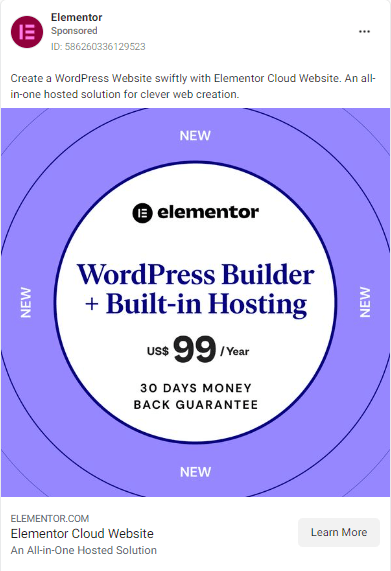
Email marketing
If you have been in the e-commerce industry, then you must have heard of email marketing. It has become a staple for e-commerce brands to utilize emails to send engaging content, exclusive offers, and regular email newsletters.
With email marketing, you can craft personalized, eye-catching emails to keep the customers interested in your offerings and allow them to think about purchasing them at the first opportunity.
In addition to tailored promotions, you can run abandoned cart campaigns to encourage visitors to return to your platform and finish the checkout process. Including email marketing can add depth to your overall e-commerce marketing strategy, allowing you to make the most of this channel.
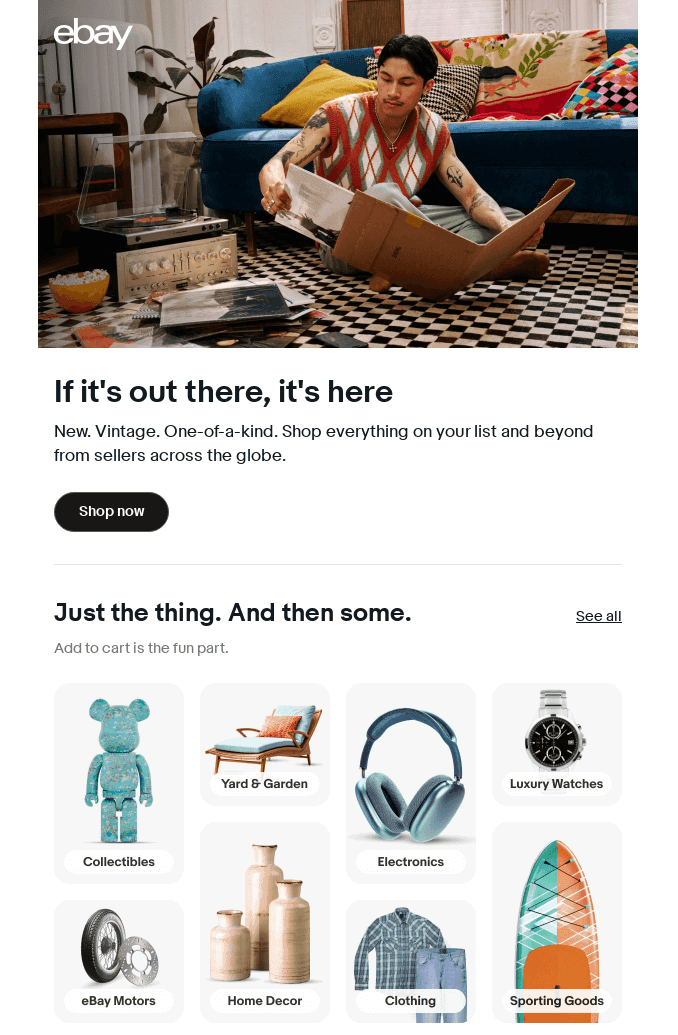
Send eye-catching emails to encourage leads to take action.
With Zixflow’s native email builder, you can create tailored emails and send them to your audience directly.
Schedule a DemoInfluencer marketing
Why spend time building a customer base from scratch when you can use a prebuilt one to market your business? Influencer marketing allows you to leverage your audience to promote your products, boosting the chances of getting sales.
Additionally, collaborating with an influencer lets you build credibility, penetrate a market segment more efficiently, and increase traffic to your site.
To kickstart your influence marketing initiatives, search for relevant influencers in your niche. Using tools like SproutSocial, Upfluence, or Modash, you can find the right influencers that best match your marketing objectives.
Mobile marketing
Although email marketing is an excellent way to engage customers, since it has been used to such a large extent, people have started ignoring it. So, to go around this issue, you can incorporate other channels into your e-commerce marketing to provide an all-around customer engagement.
These days, consumers are using their mobile devices for everything, including browsing and ordering products online. This is why, running mobile marketing campaigns across messaging channels like RCS and modern communication apps such as WhatsApp, lets you reach customers on the go.
For example, RCS is the powered-up version of SMS that comes with advanced marketing features to let you elevate your e-commerce promotions and connect with customers directly. Also, RCS is a two-way channel. This means you can use it to conversate with customers in real time and guide them effectively across your sales pipeline.
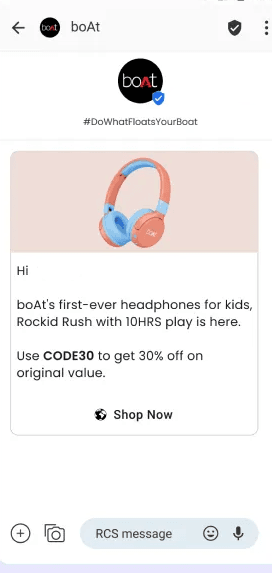
How to build an effective e-commerce marketing strategy?
As you have seen above, a robust e-commerce marketing strategy involves many working aspects that need to be monitored in real-time and adjusted accordingly as needed. That being said, here are the steps to craft a tailored e-commerce marketing roadmap for your business.
Define clear goals
Marketing, for any business, is a tool to attract more people and convert them into customers. The same goes for e-commerce. Before you decide on what types of marketing initiatives to take up for your business, you need to get a clear idea of what you wish to achieve with your efforts.
These goals can vary depending on which stage your business is in. For example, if you are a startup e-commerce company, then getting sustainable and continuous business growth can be your goal. For that, you can set a sales target of breaking even with your operational costs and other expenses.
Or you can focus first on building a reputation for your brand in the market. To do that, you need to establish an online presence and position yourself with a USP that sets you apart from your competitors.
As I said, goals can differ based on your business. But goals let you focus on concrete results and give direction to your business.
To set goals for your e-commerce marketing strategy, you can implement a SMART framework which stands for:
- Specific
- Measurable
- Achievable
- Realistic
- Timely
A good example of a SMART objective is achieving a growth of 15% in revenue within the next quarter. The 15% boost in sales is specific, can be measured via various sales KPIs, is achievable, and is realistic in nature. The time limit of a quarter to hit this goal, making it timely as well.
Figure out your ideal audience
E-commerce encompasses a large number of products ranging from apparel to electronic devices. Each product or niche has a different audience with varying queries about why they need to buy a particular product.
Plus, your focus should be on the users that match your offerings. For instance, if your store sells home and office furniture, you would want to target homeowners and businesses with office spaces.
Furthermore, analyzing your target audience gives you insights into the common problems they face, enabling you to create a tailored, customer-centric selling approach for higher chances of conversions.
A good starting point is developing in-depth customer personas for every market segment you want to target. These personas are a depiction of your customers and include key information about them, such as age, location, gender, buying habits, browsing preferences, previous purchases, sales objections, and more.
This will allow you to connect with your audience on a deeper level, and help you build strong customer relationships for the continuous success of your e-commerce business.
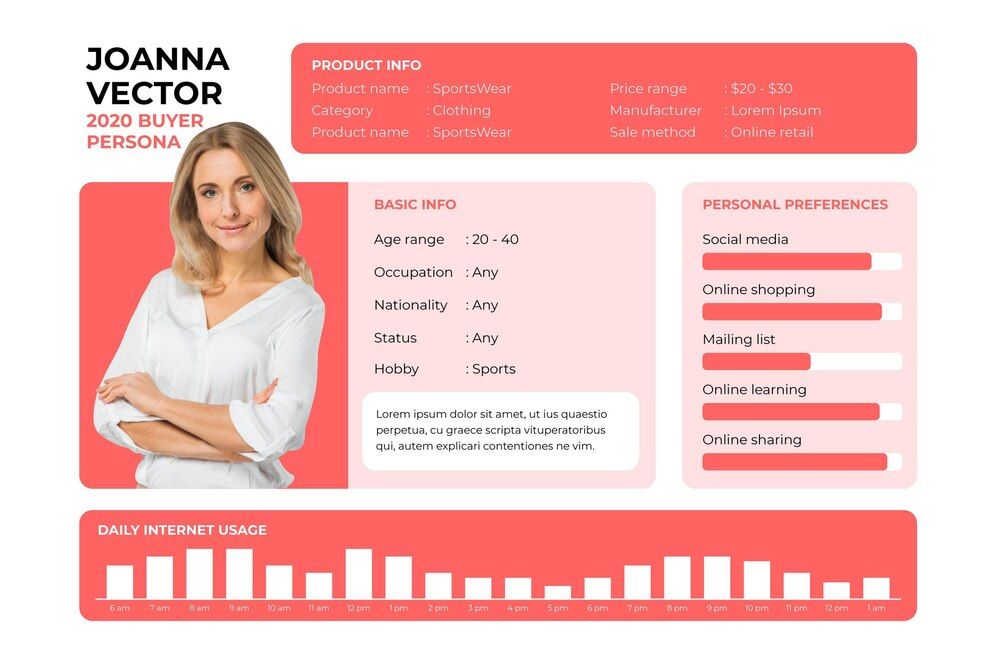
Deciding on the right marketing channels
Now that you know your goals and audience better, it’s time to think about which channels you would include in your e-commerce marketing plan. Since there are so many channels available to pick from, you need to select the correct ones that are most used by your customers.
Once again, the research you did in creating your customer profiles will help you identify the channels preferred by your customers. Not just that. You can also figure out the proper channels to communicate with them to enhance direct interactions.
Some customers might prefer to be reached out via social media while others like SMS or WhatsApp. Whatever their choice may be, knowing this information can let you optimize the effectiveness of your entire marketing strategy.
In addition to the channels most used by your customers, you also have to think about your products when deciding on the marketing avenues. As I said in the previous Instagram vs. X example, the type of products you are selling can greatly influence the marketing channel you should go for.
Here is a table with some of the common e-commerce products along with the marketing channels you can select to promote them to your customers:
| Product Type | Marketing Channels |
|---|---|
| Apparel | Instagram, Facebook, RCS, Google Shopping, or email marketing |
| Electronics & Gadgets | Google Search, YouTube, blog posts, or Reddit Communities |
| Beauty & Skincare | Instagram, TikTok, YouTube, RCS, WhatsApp, or email marketing |
| Furniture | Pinterest, Instagram, Google Shopping, YouTube, or SEO blogs |
| Fitness | Instagram, YouTube, influencer marketing, or email marketing |
| Food & Beverages | Instagram, RCS, WhatsApp, or push notifications |
| Software | LinkedIn, Google Search, Webinars, or email marketing |
Implement an omnichannel marketing approach for your e-commerce business.
Leverage multiple marketing channels of Zixflow to provide an all-round customer experience.
Run CampaignsA/B test your messaging
With your marketing channel decided, next is the part of crafting your messages. No matter which channel/s you go with, your messages should be personalized based on each individual. A tailored message not only increases your engagement rates but also boosts the probability of customers taking action on your message.
But how can you find the perfect message or template that resonates the best with your customers? By conducting A/B tests.
A/B testing consists of comparing two versions of a message to find out which one generates better results. It can be used on a wide variety of things ranging from your e-commerce product pages to the marketing content you send.
It is an important aspect of e-commerce marketing because it lets you try out multiple components or tactics, and analyze which version is driving the best results. Having said that, when it comes to writing your promotional messages, you should experiment with different kinds of headlines and content to see how your audience reacts.
For example, you can create two welcome emails with varying headlines, visuals, and message copy for the same channel. After that, you send these messages one at a time to a selected audience and monitor how they interact with them.
By tracking critical engagement metrics, like open, click-through, and bounce rates, you can identify which format is more effective for your marketing strategy. This way, you can stick to the same elements to drive maximum ROI for your efforts.
Continuous monitoring & optimization
With time, your business changes, and so do your customers. So, as time goes by, your marketing strategy will start to become outdated; that is if you haven’t fine-tuned it with recent trends in your industry.
Constant tracking or crucial marketing KPIs let you identify potential areas of improvement and stay on top of your marketing game. Using the insights collected from your monitoring, you can enhance your e-commerce marketing to keep it relevant with the latest changes.
The metrics to track rely on your unique e-commerce business and the goals you have set. However, below are some of the standard KPIs that you should always be tracking to maintain the effectiveness of your overall marketing plan:
- Click-through rate (CTR): Percentage of users who click on your ad or link after seeing it.
- Conversion rate: Percentage of your visitors who complete a desired action (purchase, signup, etc.).
- Bounce rate: Percentage of visitors who leave your site without taking any action.
- Average session duration: The average time users spend on your website.
- Customer retention rate: The percentage of customers who make repeat purchases.
- Cart abandonment rate: Percentage of users who add items to the cart but don’t complete the purchase.
- Customer lifetime value: The total revenue you expect from a customer over time.
- Social media engagement: The number of interactions on your posts, such as likes, shares, or comments.
On top of these numbers, you need to gather customer feedback on all the issues they face or questions they had when they interacted with you for the first time. Make a list of things that you can optimize based on this feedback, and start resolving these problems so future customers can have an easier time making a purchasing decision.
Create a budget
Lastly, after you have finalized everything about your e-commerce marketing strategy, it is now time to decide how much you are willing to spend. Depending on the complexity of your plan and the channels you have included, the cost of running marketing campaigns can go up significantly.
That’s why, make sure you prioritize the high-value channels where the chances of getting conversions are the most. When determining your marketing budget, think about the elements like:
- Messaging costs (per message or subscription-based)
- Tools/ software usage expenses
- Ad spend
- Cost of using in-house marketers or agencies
- Additional budget for extra activities (influencer partnerships, SEO, etc.)
I know there are a lot of things to consider when deciding the right amount. There is no one-size-fits-all approach that you can take for your marketing expenses. However, I can give you a rough estimate of how much you should consider spending on marketing.
E-commerce brands spend 7-15% of their annual revenue on marketing. This number can change depending on the size of your business and which industry you operate in. For growing businesses, this number can range from 10-15%, and for new starters, it can go above 15%. This is because a new brand needs to spend more on brand building and acquiring customers.
So, if you have an annual revenue of $100,000 your e-commerce marketing budget should be around $7,000 to $15,000.
How can Zixflow help you market your products effectively?
E-commerce marketing has numerous working elements that have to be managed in real-time. Be it sending timely follow-ups or responding to incoming messages, having a centralized solution that lets you handle these aspects can be a time saver, thereby boosting your overall efficiency.
With Zixflow, you don’t have to worry about getting separate tools for overseeing multiple channels as the platform itself supports numerous channels, including RCS, WhatsApp, SMS, and email. Using this omnichannel solution, you can run marketing campaigns across one or all the channels right from a single dashboard.
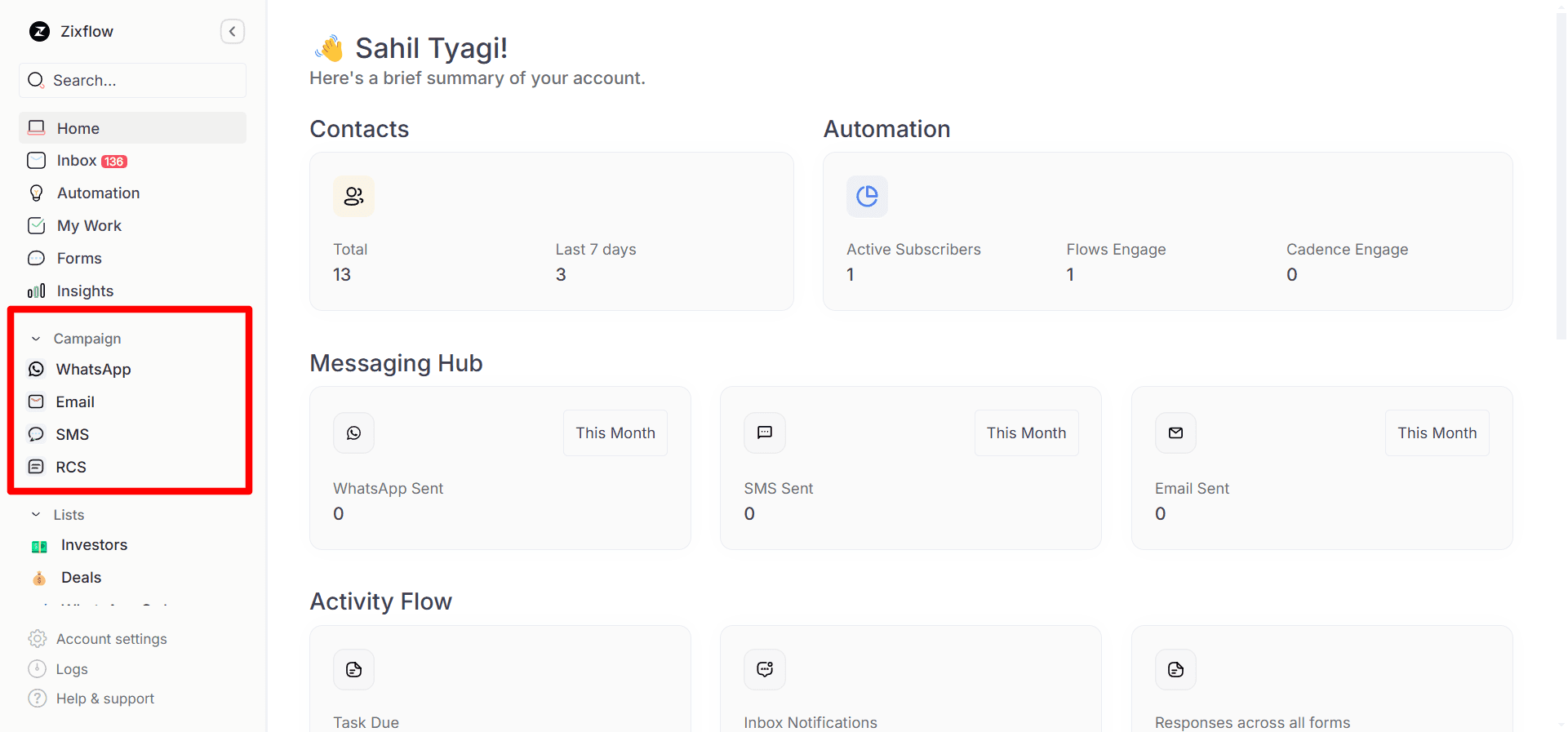
Furthermore, the solution enables you to automate your engagement with chatbots and sales cadences. Being a code-free solution, with Zixflow, you can easily set up a WhatsApp or RCS chatbot to autopilot your interactions with customers and streamline customer engagement. All you have to do is set up the conditions for the chatbot to follow and determine the action it’s supposed to take.
Here is a video explaining how to use the Zixflow’s automation builder:
Not just that. Marketing doesn’t end with just sending a message. Oftentimes, customers reply back to you asking for additional information or questions about your product. You have to respond back to these users as you cannot lose interested leads due to unresponsiveness.
So, to let you promptly reply to incoming messages, Zixflow includes a unified inbox, giving you the ability to view all customer responses. This inbox ensures that you don’t have to switch between multiple inboxes to keep track of un-replied messages.
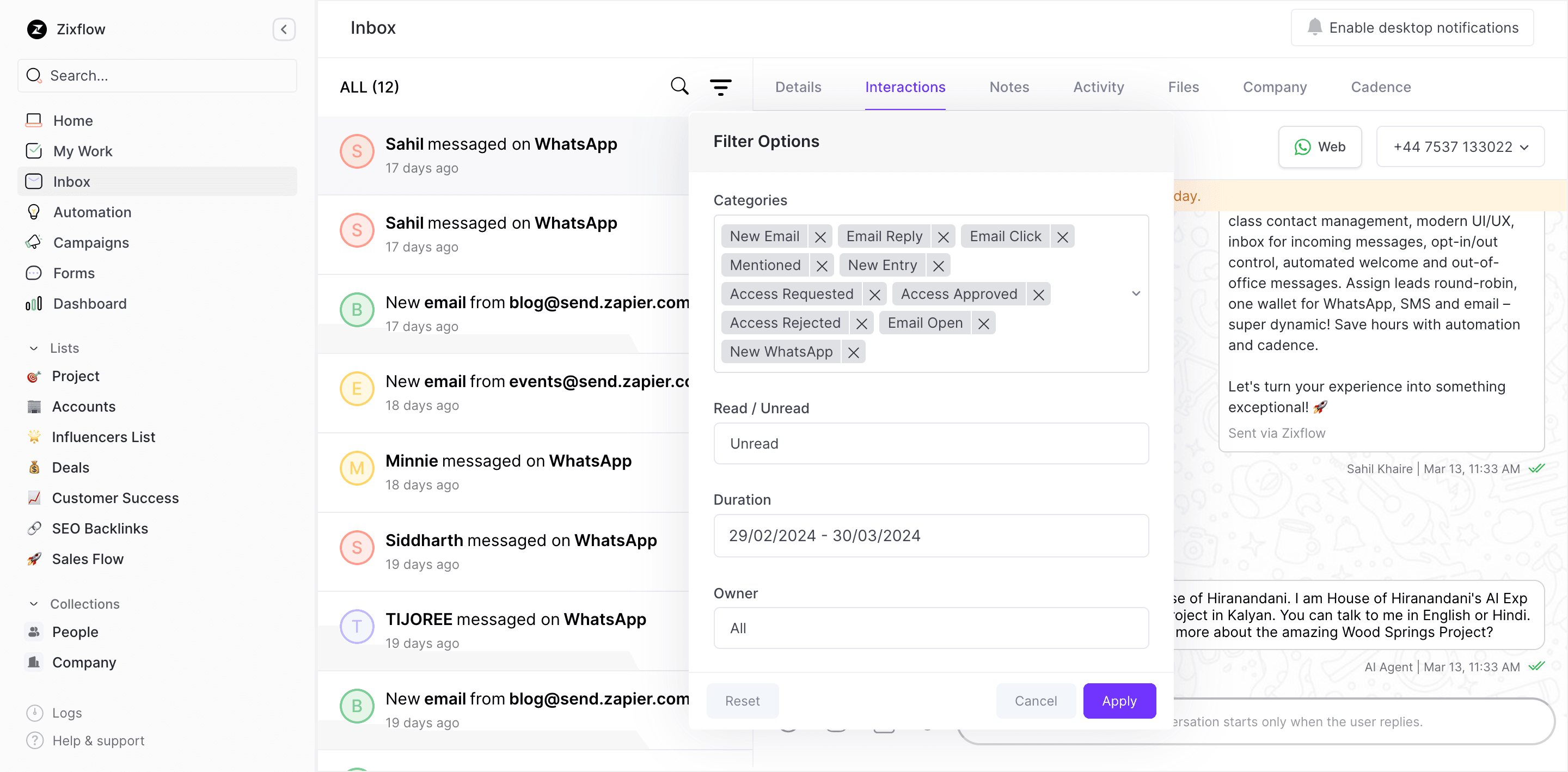
These are just some of the features of Zixflow. For leveraging the complete package of the platform and seeing it in action, you can sign up for a 7-day free trial within minutes without providing any payment details.
Ready to craft a robust e-commerce marketing strategy to elevate your online store?
E-commerce marketing can be a great tool, which if used correctly, can give you the required boost to scale your business multiple times. Having an in-depth knowledge of your target audience is crucial for sending personalized messages, selecting the right marketing channels, and offering value to them.
As your business grows, the complexity of your marketing strategy also skyrockets, with global regulations and laws to follow. But with the right approach and correct solutions, you can create an amazing marketing roadmap to help you attract customers and utilize customer engagement for more sales.
Lastly, if you are looking for an omnichannel engagement, CRM, and automation platform to streamline your e-commerce operations, then Zixflow is a choice for you. With its pay-as-you-go campaign wallet, you can run marketing campaigns in a cost-effective way, without subscribing to numerous tools. Book a demo with our experts to see the feature set of Zixflow before making a purchasing decision.
Frequently asked questions regarding e-commerce marketing
E-commerce marketing revolves around many aspects and it can take a considerable amount of time and resources to build a marketing plan for your business. So, to help you with that, here are some common questions and answers about e-commerce marketing:
What is the difference between e-commerce and traditional marketing?
E-commerce marketing comprises multiple factors and channels, like social media, content marketing, SEO, and paid ads. On the other hand, traditional marketing involves physical channels like leaflets or print advertisements to grab customer attention.
What are the ways to create customer personas?
Utilize customer research, surveys, collect feedback, and analyze past interactions to build an ideal customer profile for better targeting and driving engagement.
How to acquire new shoppers for your e-commerce business?
Make use of organic search, social media platforms, or PPC ads to encourage customers to check out your platform. Once they are on your site, you can leverage optimized product pages to get conversions.
Does having a CRM help in getting more sales?
A CRM platform allows you to take advantage of the data stored in it to optimize your marketing initiatives. Using details like past interactions and interests, you can personalize your messages accordingly.
How to monitor the ROI of your e-commerce marketing efforts?
Figuring out the return on investment for your e-commerce marketing campaigns is simple. Take the total amount of revenue you earned from your marketing, divide it with the total costs of your efforts and multiply the result by 100.
